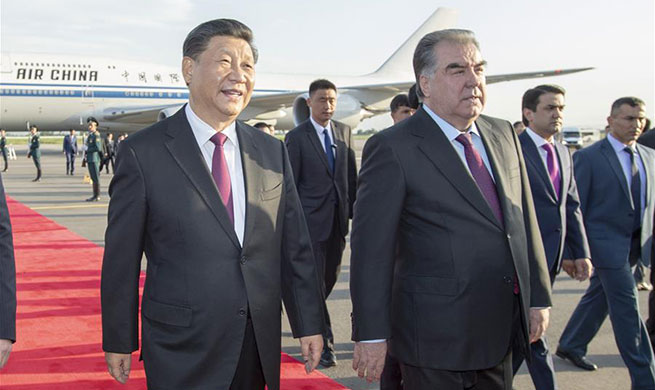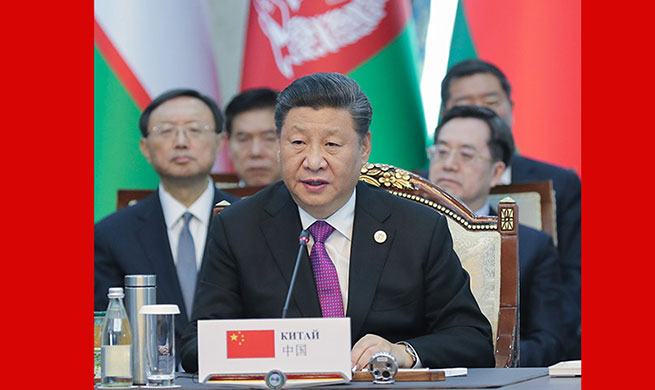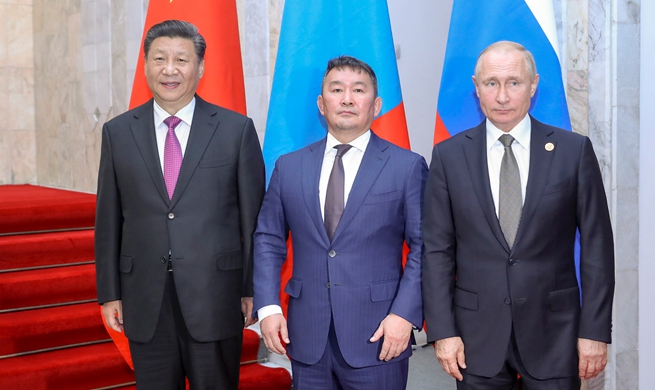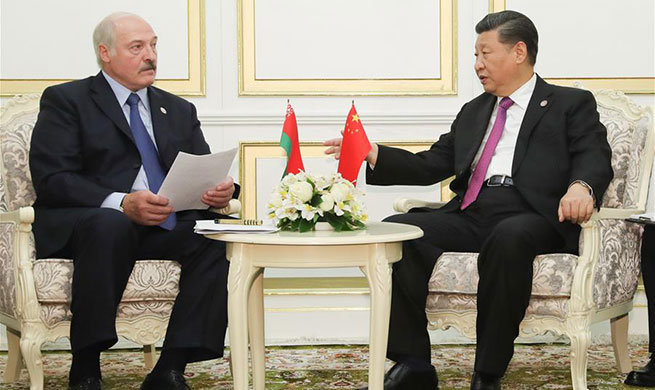by Peter Mertz
LARAMIE, the United States, June 14 (Xinhua) -- Staring in the face of huge potential income fallouts from the U.S.-China trade war, American educators are pulling out all stops to stem the tide.
"A drop in the number of Chinese students studying in the U.S. could have a serious impact on some institutions where their presence contributes significantly to the bottom line," said University of Wyoming (UW) international education expert Anthony Ogden.
"Although the U.S. remains the top host of international students globally, contributing over 42 billion U.S. dollars annually to the U.S. economy, the number of new international students has begun to decrease," Ogden told Xinhua early this week.
Ogden, associate vice provost for global engagement at the UW, isn't the only U.S. international educator sounding the alarm. From coast to coast, America's vaunted educational system is reeling from the potential fallout of a diminished Chinese presence.
And all are quick to note that current White House policy and rhetoric have made it unattractive to study in the United States.
For the first time in decades, the number of students coming to America is declining, according to recent data from the Institute of International Education (IEE), a 100-year-old group that monitors international education. Billions of dollars are at stake.
RISING DISCRIMINATION
"After the Federal Bureau of Investigation director accused foreign researchers of stealing intellectual property from the United States, Chinese students and scholars have felt singled out and further alienated," Xiaojie Li wrote in InsideHigherEd.com this week.
Li is Chinese student services coordinator at the International Students and Scholars Center at the Arizona State University.
She and Ogden both hold PhDs and are leading a chorus of highly regarded educators who are sending up caution flags.
"Students from China account for the largest number of students in the U.S.," said Ogden, who has spearheaded recruitment at some of America's largest universities, including Penn State University and Michigan State University.
Ogden told Xinhua that "China's recent statement warning of the 'risk' of studying in the U.S. is of concern," and could spell a drop in Chinese enrollments soon.
"Besides living with the uncertainty due to the tightened visa policies and other regulations, Chinese students, as the largest international student population in the United States, are also increasingly disturbed by the generally unwelcoming environment in the country overall," Li noted on Tuesday.
NUMBERS
China has around 400,000 students in the United States, by far the most among the 950,000 foreigners who come to study at the country's 4,000 colleges and universities, according to sources.
In November, the Trump administration threatened to ban Chinese students entirely, a potential economic hit of 30 billion dollars a year, according to data from the Association of International Educators and U.S. Department of Commerce.
"Although concerned with geo-political tensions, we remain confident that our educational partnerships in China are resilient and that our collective commitment to education and cultural exchange will remain paramount," Ogden said.
Ironically, with the Trump administration insisting on "balanced trade," the elimination of income from Chinese students which is more sizeable than that of any agricultural sector flies in the face of alleged White House objectives.
"This is more fly-by-the-seat of the pants Trump foreign policy - his Great Trade War was ill-advised and has been self-destructive to U.S. interests across the board," Washington political insider David Richardson told Xinhua.
REACTION
Despite the administration's bellicose China stance, America's educational community is reacting from east to west is working to attract Chinese students - like never before.
A Feb 26, 2019 article in Educations.com noted that "China remains the world's largest source of international students ... over half a million academics leaving the country to study abroad, according to the Chinese Ministry of Education."
"So, it's not surprising that many higher education institutions have begun to target their marketing towards this geographic market," the article noted.
InsideHigherEd.com this week gave advice to educators recruiting Chinese students.
"We as faculty and staff members, should actively identify discriminatory behavior toward Chinese students, spend time listening to how they feel and help them to analyze the issues, increase their awareness of neo-racism and navigate existing resources," Li said.
"That way, Chinese students can better understand the importance of speaking out and also feel comfortable and empowered to do so," she added.
CURRICULUM ENTICEMENTS
With potential revenue from China in jeopardy, American administrators are getting creative in ways to attract students from the biggest market in the world.
Last month, Ogden spearheaded a Wyoming education delegation that visited China and unveiled a number of new degree options and exchanges.
"Our university sits at an elevation of 2,200 meters, and that is an extraordinarily high elevation with thin air," Ogden said, noting that UW's location in the Rocky Mountains north of Colorado is a sought-after destination for Olympic caliber student-athletes.
The agreements, with Chengdu University of Information and Technology (CUIT) and Shanghai University of Sport (SUS), were the highlights of the UW delegation's week-long visit in early May.
"We signed a new and innovative partnership with Shanghai University of Sport which establishes an SUS-UW Center in UW's Division of Kinesiology and Health," Ogden told Xinhua.
"The Center will support visiting faculty and scholars, facilitate education, training and research collaboration, and provide student and faculty exchanges," he added.
Ogden said that shortly after the U.S.-China trade war began his staff met to strategize on how to best retain the critical Chinese market.
"Cooperation with China is integral to our global engagement strategy. Last fall, the University conducted a comprehensive audit of our engagement in China with the intention of developing a more cohesive and intentional strategy," Ogden said.
"Currently, the University of Wyoming works with nearly 40 distinct institutions, with activities ranging from student, faculty and staff exchanges to joint degree programming and research collaboration," he said of UW's aggressive Chinese recruitment efforts.













